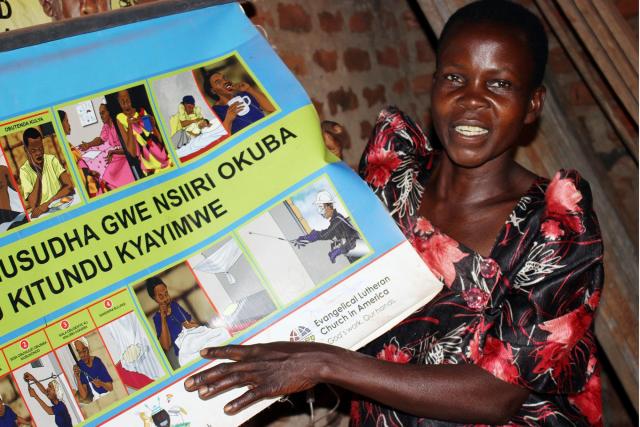Malaria, a leading threat to human life in Uganda

Malaria remains a leading cause of death in Uganda. 2016 Statistics from the Ministry of Health indicate that malaria accounts for over 27% of the deaths in Uganda. Same statistics indicate Uganda has the world’s highest malaria incidence with a rate of 478 cases per 1,000 populations per year and also ranks 6th among African countries with high malaria-related motility rates. 50% of the malaria related deaths are of children below 5 years.
Northern Uganda region remains the most affected area by malaria. However, the disease is also affecting other districts/regions countrywide. Luuka district is one of the many districts affected by the disease. Located in Uganda’s Eastern region, Luuka's malaria prevalence rate is at 43%.
Despite being preventable, malaria continues to claim people’s lives in Luuka. To prevent and manage malaria prevalence, the Government of Uganda in partnership with the private sector is implementing various interventions including; sensitizing communities about the disease, distributing free treated mosquito nets, indoor residual spraying as well as extending free testing and medication services for malaria to various communities.

Community sensitizations on malaria, a stitch in time
Steven Waigonda a 67-year-old Coordinator of Irongo sub county in Luuka district recalls a high malaria prevalence rate in Luuka district in 2015. “We were ignorant about how the disease is transmitted and its prevention,” said Waigonda. “Our houses were surrounded with sugarcane plantations which are breeding grounds for mosquitoes which transmit malaria.”
However, with various community outreaches by the Lutheran World Federation (LWF) in partnership with the Local Government, people have acquired sufficient knowledge on how to prevent malaria by keeping mosquitoes at bay.
“LWF’s Village Health Teams (VHTs) advised us to keep the sugarcane shambas at least 15 metres away from our houses, to clear the bushes and rubbish in our household proximity and, to fill/cover empty pits that are potential mosquito breeding grounds.” Said Allen Naigaga from Irongo sub county. She continues to say that VHTs instructed them to sleep under treated mosquito nets and perform in indoor residual spraying whenever necessary.
The communities were also recommended to test regularly for malaria especially whenever symptoms arise. “If positive, we were told to get malaria medication from professional medical personnel instead of self-medicating, a dangerous practice that was common in our communities.” Added Naigaga.
With sufficient knowledge about malaria among the people of Luuka, Waigonda describes a decrease in the disease’s prevalence.

Mosquito nets a sigh of relief for the residents of Luuka
Joined by partners like LWF, the Government of Uganda has and continues to distribute treated mosquito nets to families in Luuka district. LWF has taken the initiative to distribute mosquito nets to three of the eight sub counties of Luuka including Irongo, Nawampiti and Burongo.
“We distributed mosquito nets to 16,824 persons in Irongo, Nawampiti and Burongo sub counties and also taught them how to use, clean and treat them with insecticides.” said Proscovia Alitwaala, a VHT member.
Florence Mirembe is a 45-year-old mother of 9 in Nawampiti sub county who received 6 mosquito nets for her household from LWF. She says that sleeping under mosquito nets has kept her family away from hospital. “Its 8 months since any of my family members was diagnosed with malaria because we sleep under mosquito nets. Not spending on hospital bills has allowed me save more money to meet my household needs.”
Malaria prevalence drops from 47% to 43%, more interventions needed
In a period of 12 months with interventions against malaria, its prevalence has dropped from 47% to 43%, which reflects to 9,640 people free from malaria in Luuka district.
Despite the decrease and current interventions, there’s a lot more that needs to be done to eradicate malaria in Luuka. Dr. Mathias Wabwire, the District Health Officer says that enforced indoor residual spraying would play a vital role in eliminating mosquitoes and malaria if it’s done together with continuous community sensitizations, mosquito net distribution, regular testing and treatment as well as clearing bushes next to household.
He continued to say that people also need to take precautions like; taking prescribed medication to keep malaria at bay, using insect repellants and wearing long sleeved clothes whenever outdoors at night. Rosent Akubo, LWF’s Sub Program Manager in Luuka says that LWF will continue to work with the Local Government to implement interventions to eradicate malaria in Luuka district.
LWF appreciates Evangelical Lutheran Church in America support towards its humanitarian activities aimed at improving health and eradicating malaria in Luuka district.

